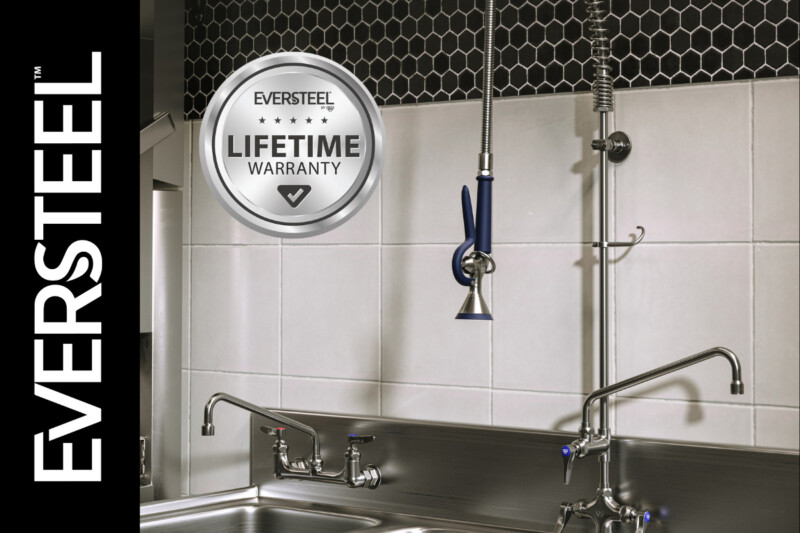Zeroing In on Centrifugal Juicers
Today's juice extractors gain points for ease of use, improved yields and sustainable capabilities.
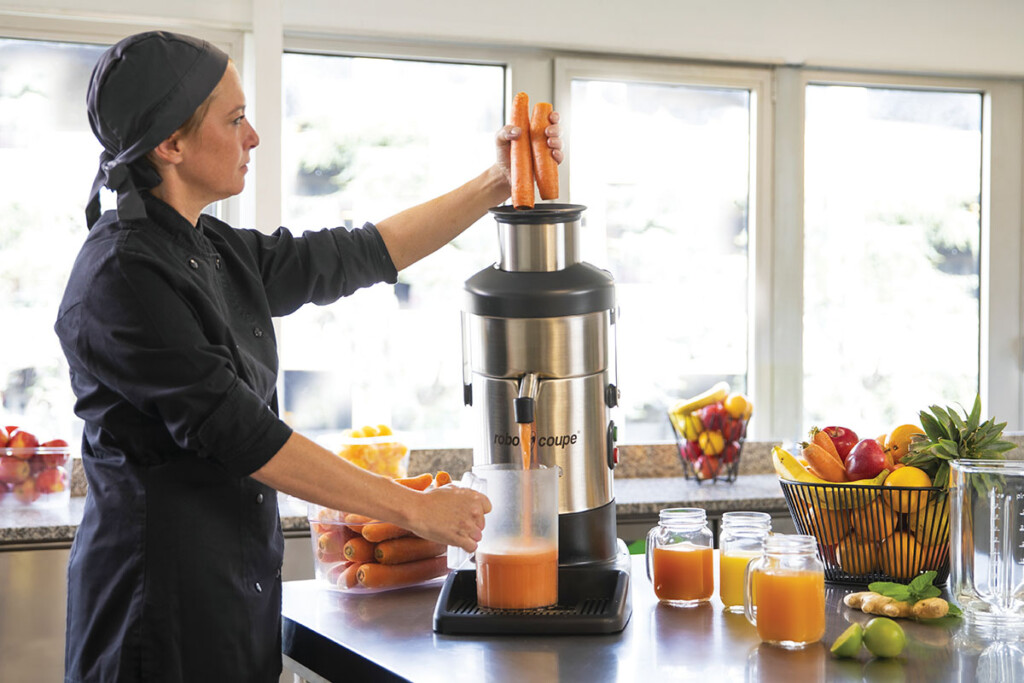
Imagine a bustling breakfast cafe. At one table, a customer sips a freshly prepared, ice-cold green juice, quenching their thirst with guilt-free, healthful satisfaction. Nearby, the waiter delivers a stack of hot, apple-flavored pancakes, then scoops up a plate that once held a serving of spinach frittata. As different as these three orders may be, they can all start with one piece of equipment: a centrifugal juicer.
Since a centrifugal juicer (aka juice extractor) can handle whole fruits and vegetables, the equipment extracts liquid—yielding fresh juice for beverage or cooking uses (like spinach juice for a less labor-intensive frittata)—as well as separates pulp. That pulp can then be dehydrated or frozen for later use, or composted—nudging operators one step closer to a zero-waste kitchen.
“Traditionally, the pulp has by and large just been tossed or thrown in the garbage can, so seeing chefs and operators looking at that as profit potential makes me pretty happy to see,” says one maker. “A centrifugal juicer really gives the chef more applications, and it gives the chef the ability to get juice out of just about anything—so, all in all, if I were to have one juicer I had to pick, it would be a centrifugal variety.”
MORE JUICE, LESS TIME
While operators are increasingly realizing these sustainable benefits, makers continue to propel models forward in small but measurable ways.
Two manufacturers mentioned larger chutes—one with a 3-inch diameter, the other slightly larger—atop their juicers, enabling operators to put down the knife and toss in more whole products. “Everybody was having to cut product down into very small pieces to put into very small openings and the R&D department was like ‘Why are they doing that? Let’s enlarge the opening and see if we can make it work the same way.’”
One of the maker’s units also has an automatic feed head, which lets the user add one product after the other in a continuous motion, they say. While some models use a manual pusher to push and process one product at a time, this unit pulls the product down through the chute and onto a spiral-staircase-like wedge, anchored by an angled edge at the bottom. Once a product catches on the edge, the blade gets to work, extracting juice within seconds.
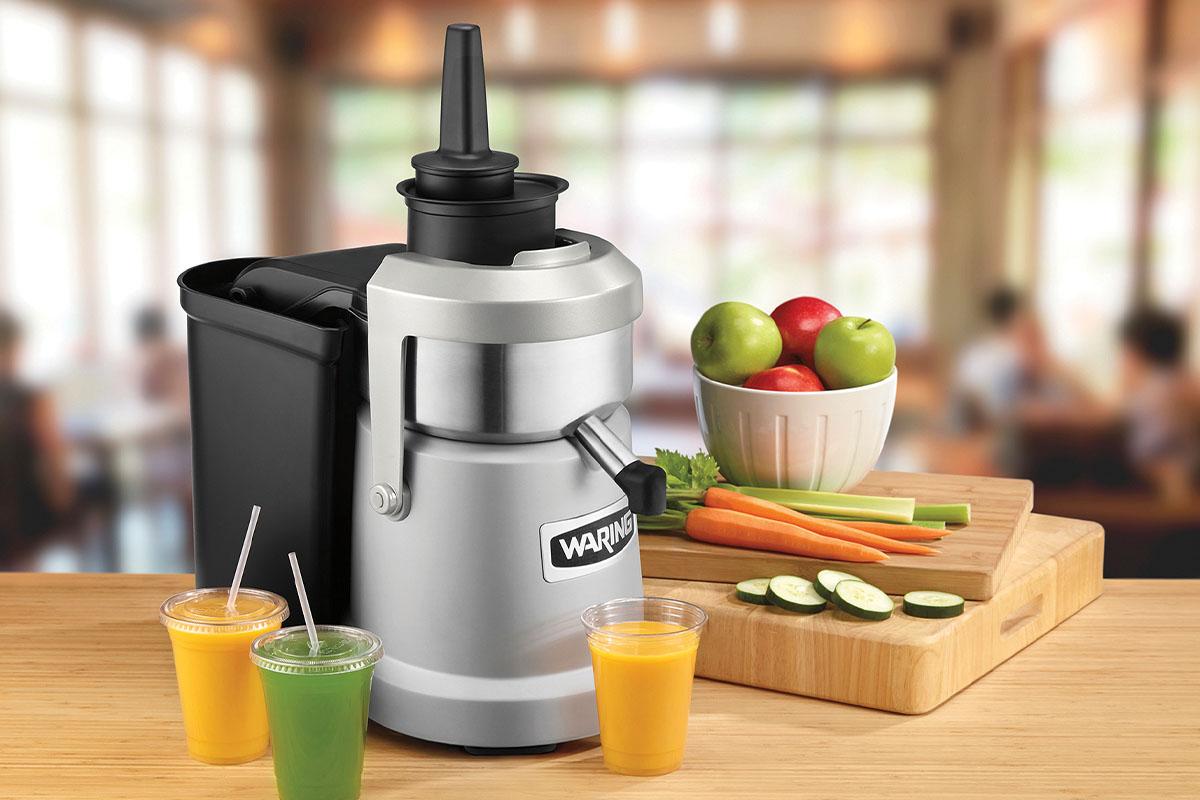
One maker’s basket design delivers a higher juice yield, and its stainless components are dishwasher-safe. Courtesy of Waring.
Another maker prides itself on its blade and screen design delivering a leading juice yield—up to 20% more than competitors, they say, with products like carrots and apples. “The blade and screen are attached,” they explain. “It’s actually like a small disc of multiple styles of blades. There’s angled walls that attach that disc, and those angled walls of the screen. And really, it’s about the angle and the size of the filter on the screen that leads you to your success. So, we have, I believe, the best design in market for yield.”
WORTH THE SQUEEZE
To find the right juicer for your operation, here are some of your first considerations:
BRAND REPUTATION. One top-of-mind pitfall to avoid is buying from a cheap, no-name, residential brand. Sure, both units can produce apple juice, but it’s not an apples-to-apples comparison. “It’s going to work fantastic for the week, then all of a sudden it breaks down within a month or two,” one maker says. While the upfront cost may be lower, purchasing a new juicer every two or three months likely isn’t all that cost-effective. To keep your juice and funds flowing predictably, stick with a commercial juice extractor, which can stand up to continual, daily use for years rather than months. Not sure which juicer brands are reputable? Makers recommend consulting your dealer or talking to other juice shops to get your search rolling.
LOCATION, LOCATION, LOCATION. Centrifugal juicers are simple and safe to operate, with the only control being an on-off switch. Some units are designed with self-service in mind, featuring quiet motors and smaller pulp bins appropriate for low-volume use. Today, convenience stores, healthcare and senior living facilities are just a few of the operations that are putting the units front and center, while restaurants may want to put them in the back to take advantage of pulp and cooking juice applications. For a more elevated back-of-house setup, one maker recommends using the juicer on a prep table in a walk-in for optimally fresh, chilled juices. “You just get a much better flavor,” they say. “It always tastes fresher and stays sweeter.”
ADDED SUPPORT. Operations with multiple juices on the menu, or those making juices containing fibrous ingredients—like ginger (see “Time Out,” below)—will have to work harder to keep their juicers clean. A water flush between every two or three juices can go a long way in preventing flavor contamination, but fibrous ingredients can quickly diminish output. So, rather than keeping a customer waiting while you wash the blade and screen, consider stashing some spares to keep things moving. One maker’s units can be disassembled tool-free in as little as 15 seconds, whereas some have locks and bolts. With just a bit of upfront education, most makers say assembly is easy—and some units will only operate if assembled correctly, adding peace of mind. Many units also have dishwasher-safe parts, adding convenience. Beyond juice, consider your pulp uses, or lack thereof. Options like a continuous, open bottomed pulp chute can dispense into a bin or bag of your choosing, aiding in the collection of individual pulps. Or, the same setup can aid operators who don’t want to worry about emptying capacity-limited bins; instead, you can align your own bin to line up with the chute. Another maker’s high-capacity, enclosed pulp container can make up to 135 juices before being emptied. Think through your menu’s demand and variety to find a comfortable fit.
A RECIPE FOR LONGEVITY
Once you choose your perfect model, a few extra steps can protect your investment. For example, if your unit uses a pusher, avoid forcing the product down, as that can cause wear and tear on the blade. And, on the maintenance side, one maker urges operators to replace the unit’s motor seal quarterly; they estimate that doing so can double the life of the machine, giving you that much more time to enjoy and explore your juice extractor’s diverse abilities.
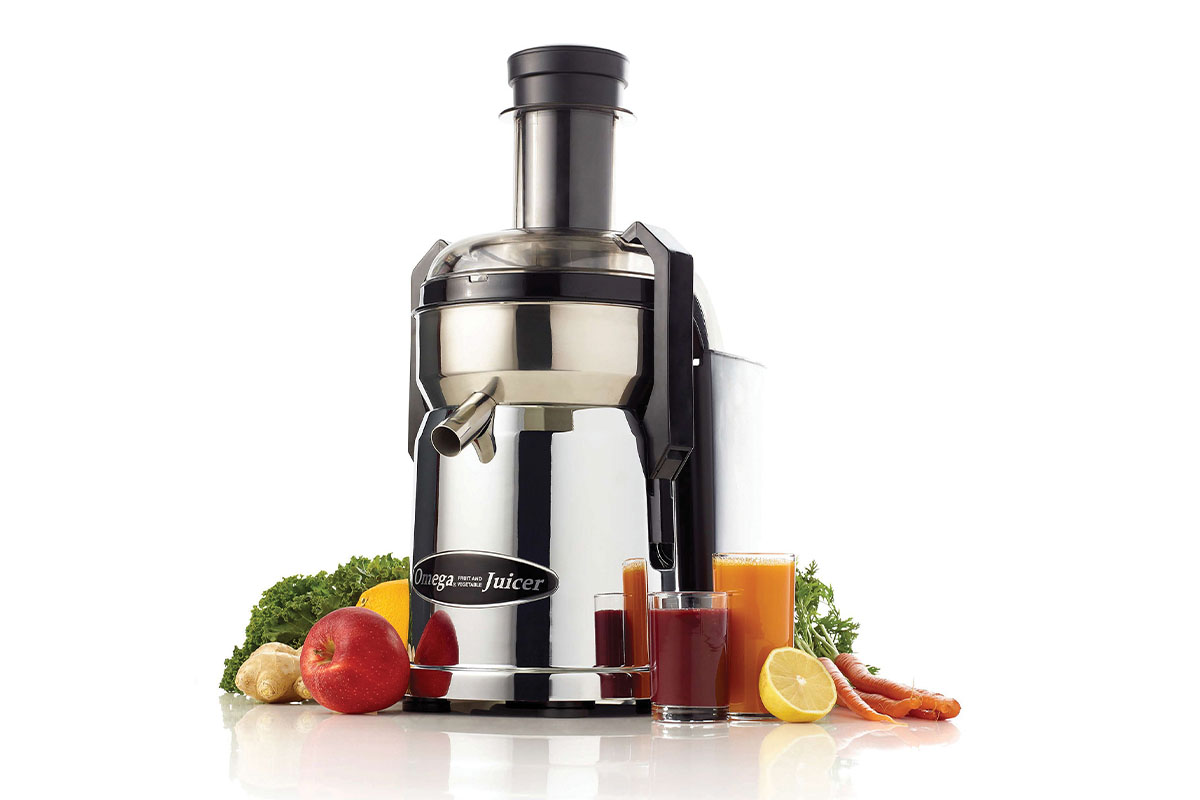
Centrifugal juicers can handle various ingredients, from apples to ginger; cleaning between recipes keeps flavors clean and yields high. Courtesy of Omega.
Time Out
While a centrifugal machine can juice a lot, there are limitations. Here’s some advice to consider if you plan on using a juice extractor for the following:
Citrus. Technically, the equipment can handle citrus (and one maker’s manual recommends peeling an orange or grapefruit if using), but “it’s not a good product in the end,” one maker warns. “No matter what citrus you have, that white part between the flesh and peel is extremely bitter. And if you incorporate that into your juice, it’s going to make your juice bitter.” Citrus-heavy operations likely want to opt for a citrus juicer—which, a maker reminds, is a pretty low-cost item available in various sizes and formats.
Ginger and/or turmeric. Centrifugal juicers can and often do handle these ingredients, but the buildup on the screen can quickly diminish output. “You just have to make sure if you’re [using fibrous ingredients] to maintain the blade a little bit more. Maybe have a spare blade on hand, because it’s going to beat it up.”
Cold press juices. A juice extractor uses a different process than a cold press/slow juicer, and therefore cannot make cold press juices. Cold press machines generally cost more and also are a bit more intensive in operation. “If the temperature is not right, or the machine’s not calibrated right, you lose a lot of profit,” they explain.
Cucumbers and pineapples. These two items should be peeled before being processed, so will require more prep time than other produce that can go in whole, says one manufacturer.
Greens. One maker with a manual push model suggests twisting and rolling leafy greens until they resemble a golf ball.
Bananas. This ingredient is not recommended to run one through a juicer, notes one maker.
Juicy Details
Pore over these descriptions of four makers’ thoughtfully designed centrifugal juicers.
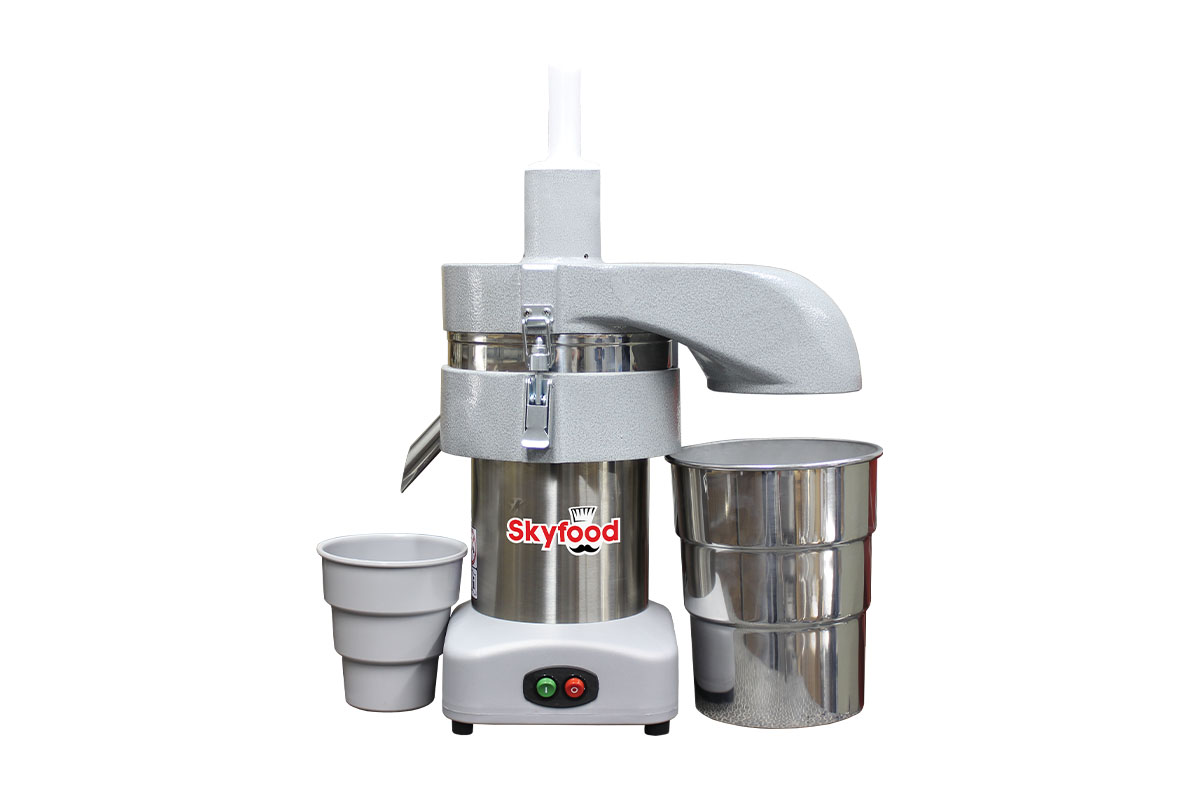
Skyfood
Model: CSE1
Description: This unit—featuring stainless juicing parts and motor housing—comes with a 4 1/5-qt. waste basket and 1-qt. juice container. A sensor ensures safety, keeping the machine from powering on unless the lid is properly secured.
Website: skyfood.us
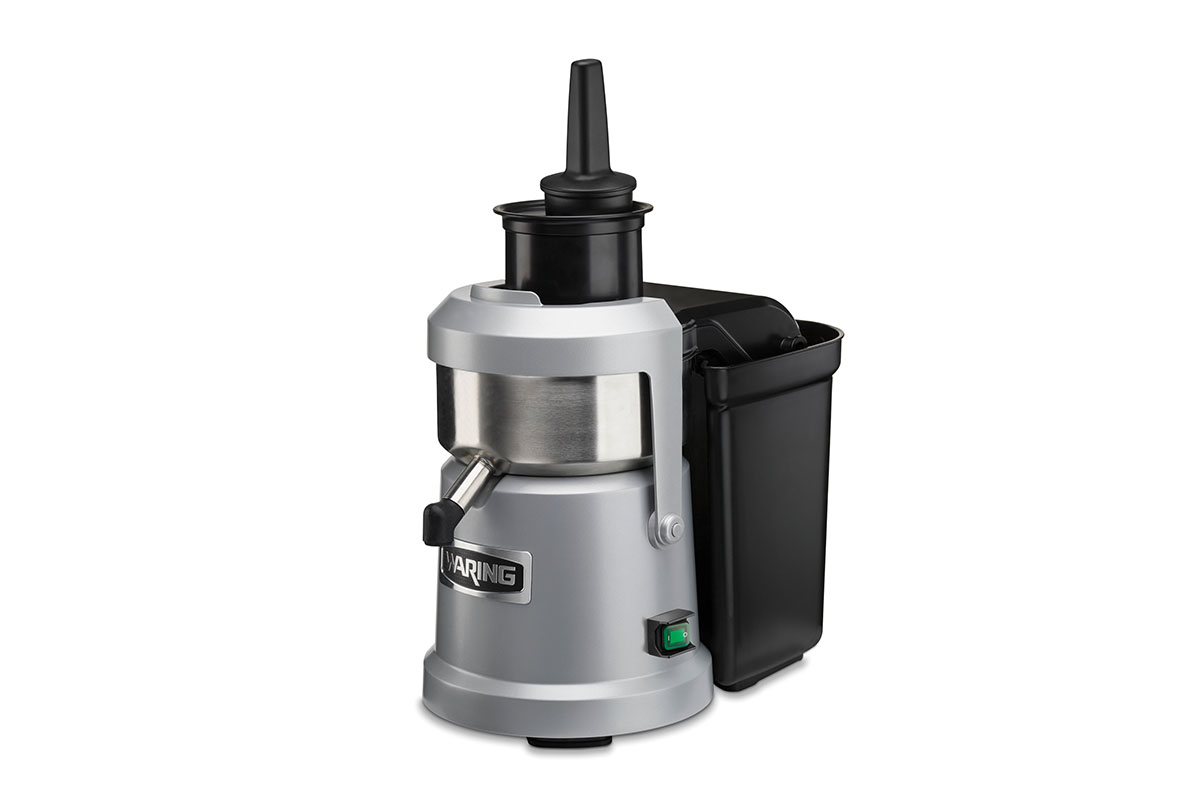
Waring
Model: WJX80X
Description: A larger feed tube (over 3 in.), easy grip pusher and leading juice yield (up to 20% more than competitors, says the maker) set this machine apart. Rotate the spout upward to avoid dripping, then turn it downward when a container is underneath (with room for a 1 1/2-qt. blender jar beneath). An optional continuous pulp chute aids in high-throughput pulp disposal and/or collection, or a 12-qt. container comes standard.
Website: waringcommercialproducts.com
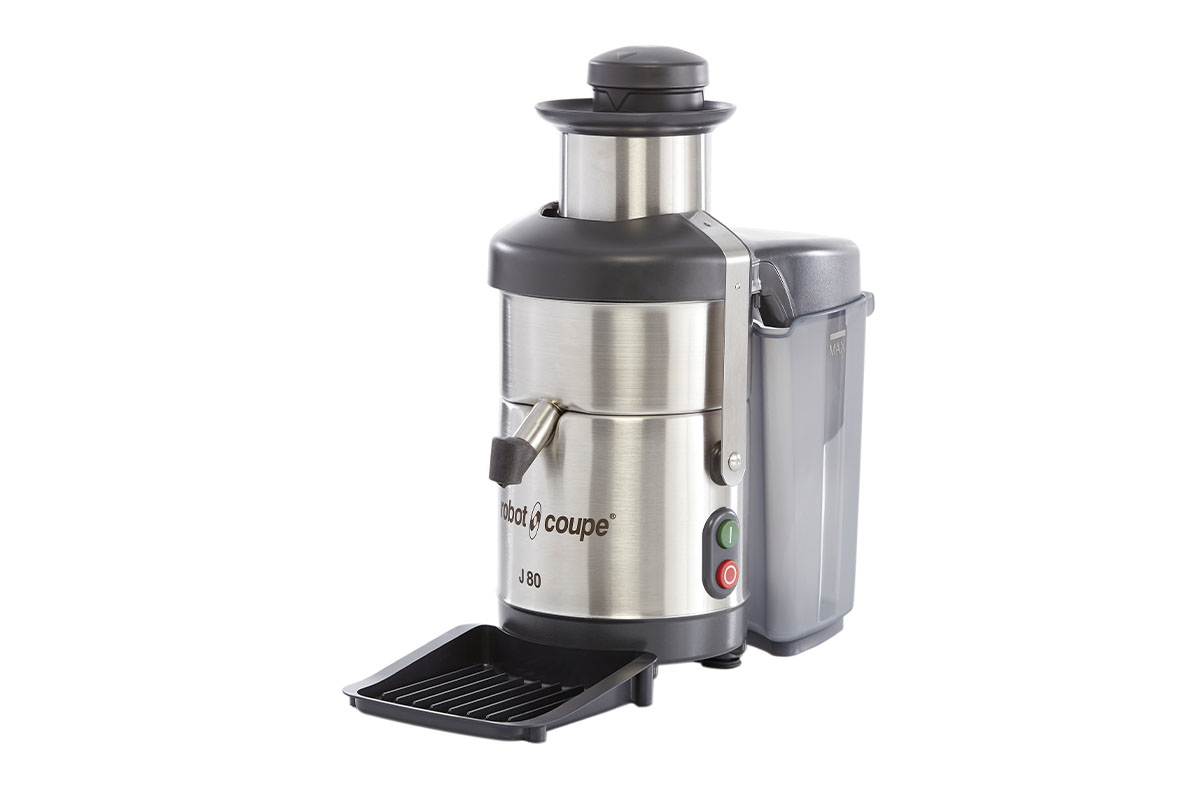
Robot Coupe
Model: J 80
Description: Toss whole apples and other produce into a 3-in. feed tube, then let the unit’s automatic feed system get to work without any manual product pushing. Fresh juice is dispensed in as little as 7 seconds, and the spout is high enough (with a 6 3/8-in. clearance) to accommodate a pitcher. The large-capacity pulp container can hold up to 135 glasses’ pulp, and the interior basket can be removed without any tools for quick disassembly.
Website: robot-coupe.com
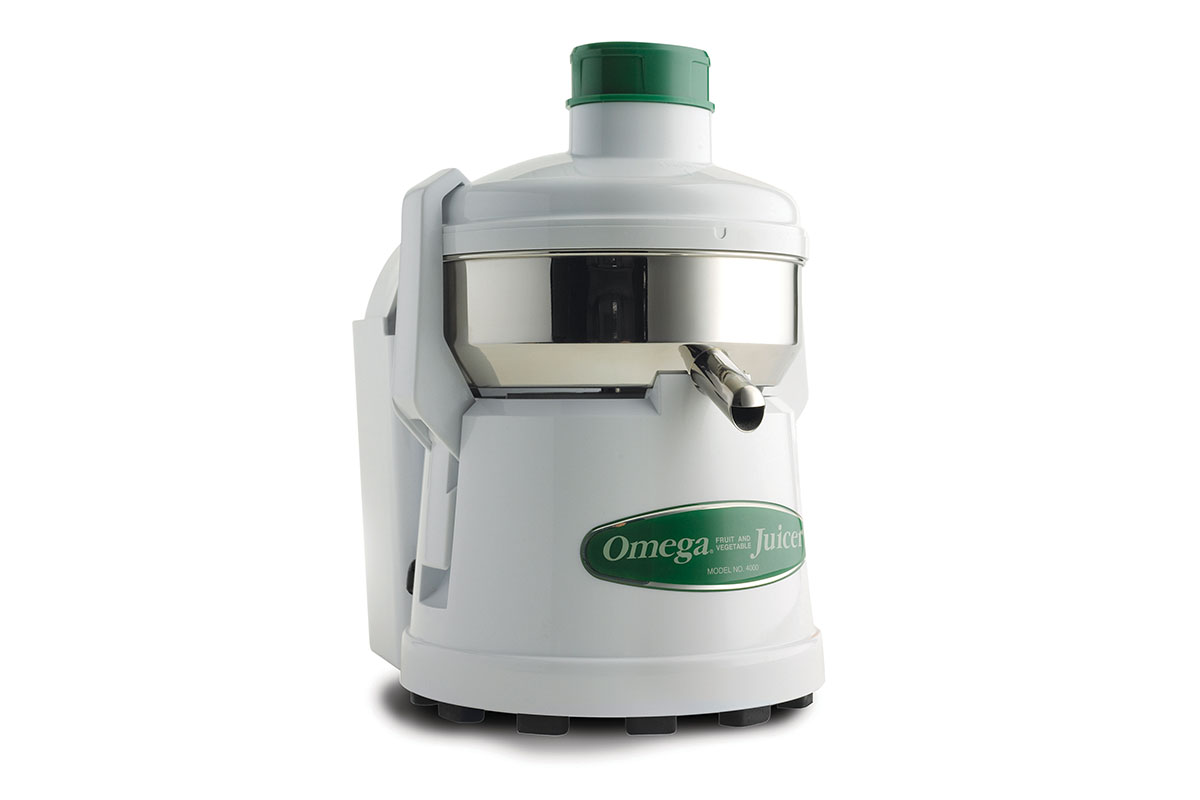
Omega
Model: J4000
Description: Disassemble this eight-piece unit tool-free in six steps and assemble in eight; a built-in safety switch ensures the unit only operates if properly assembled. Stainless parts are top-shelf dishwasher-safe, and the sandblasted bowl is quick and easy to clean. Twelve rubber feet add stability, and a bin can hold quarts of pulp.
Website: omegajuicers.com
RELATED CONTENT
- Advertisement -
- Advertisement -
- Advertisement -
TRENDING NOW
- Advertisement -
- Advertisement -
- Advertisement -

